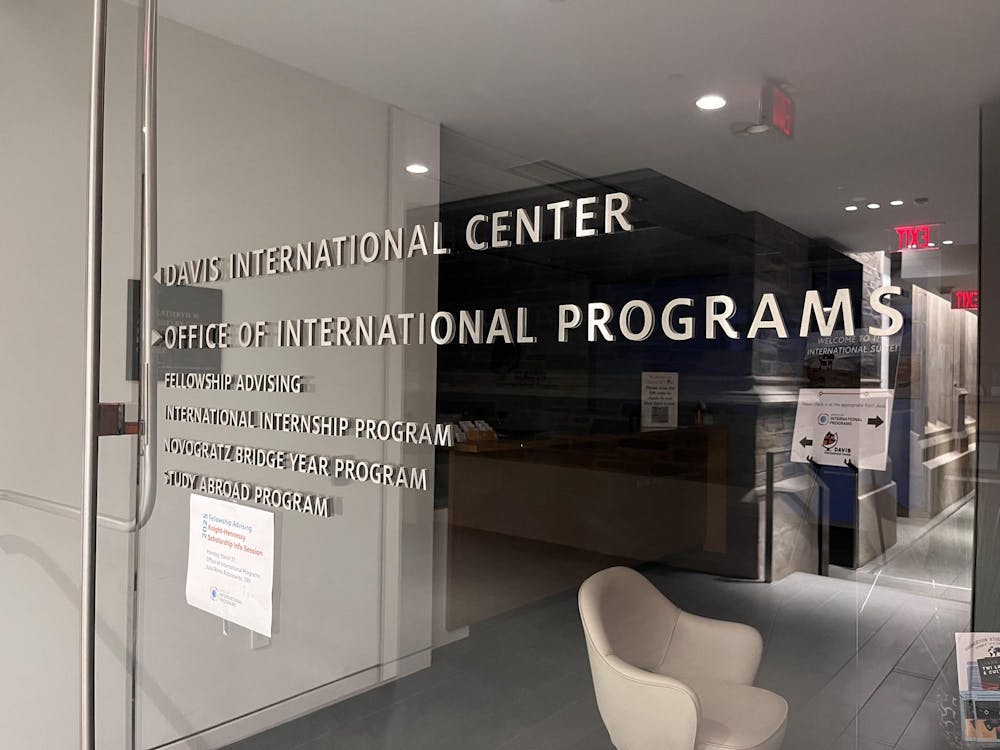In a January statement, the University claimed that they returned the artworks after an internal investigation into the ownership of certain items in the University’s collection.
The items transferred were a black-glazed askos, two female statuettes, four fragments of a red-figure calyx krater, fragments of an architectural relief, a pithos in white-on-red style and a group of fragmentary architectural revetments.
Current Art Museum director James Steward said in an interview that the June agreement was the “result of continuing internal research into our collections.”
This wasn’t the Art Museum’s first dispute with Italy over ownership of artwork. The University returned a piece of a marble funeral monument that turned out to be smuggled to Italy in 2002, and more artwork was returned in 2007 after it was determined that it had been stolen before the University bought it.
The brouhaha with Italy began in March 2000 when the Art Museum’s ancient art curator Michael Padgett reported to Italian authorities the marble monument piece had been smuggled. Padgett said he realized this after seeing a picture of the piece in its Italian excavation site in an archaeology journal.
The monument piece was returned to Italy two years later. The monument had been at the Art Museum since it was purchased from a New York art dealer in 1985.
“It’s just one of those cases where we accidentally bought a piece that had been illegally exported,” Padgett told The Daily Princetonian in 2002. “No one likes to admit they made a mistake. We try to avoid it, and when we fail we correct it.”
In December 2004, Italian authorities began discussions with the University over artifacts that Italy alleged were illegally acquired. The items included two Greek vases, a Roman silver cup, and a black Etruscan plate.

“A search of the museum records finds no indication that there was anything improper in the acquisition,” former University spokeswoman Cass Cliatt ’96 told the ‘Prince’ in March 2006.
One month later, former Art Museum director Susan Taylor and Senior University Counsel and Assistant Secretary Lorraine Sciarra met with Italian authorities to discuss the disputed artifacts. A year after the discussions, in October 2007, the University agreed to return eight items to Italy.
“There were sufficient concerns regarding the objects’ provenance,” Taylor said in an article in November 2007.
The 2007 agreement, signed in Rome, included provisions that would allow the University access to additional Italian artwork and give University students the opportunity to visit Italian excavation sites.

The Art Museum had revised its recent acquisition policy in 2006 to follow the 1970 UNESCO agreement regulating the acquisition of ancient art and archaeological artifacts. The University has been following this protocol for all the artwork they have acquired since 2006.
The Art Museum acquired the eight items that were returned to Italy in 2007 between 1989 and 1995.
“There are many fruitful outcomes [from the agreement], including archaeological opportunities afforded to Princeton students and loans made to the Art Museum by Italian cultural authorities,” Steward said of the 2007 agreement in an interview.
While the 2007 agreement appeared to settle the issue of unlawfully obtained art, another dispute began in June 2010, when Italian authorities accused Padgett of knowingly acquiring looted Italian artifacts from a New York antiquities dealer, Edoardo Almagia.
Italy accused the Art Museum of possessing nine artifacts that were acquired from Almagia from the mid-1990s and early 2000s.
“We are conducting our own investigation and looking into the various elements of the documentation,” Cliatt told The New York Times in 2010.
According to The Times, the only precedent for charges against a museum curator by a foreign government was a case that occurred in 2005. That time, the Italian government accused Marion True — a curator at the J. Paul Getty Museum in Los Angeles — of conspiracy to traffic illicit antiquities.
Charges were eventually dropped against True after the Getty Museum agreed to return the disputed artifacts.
The University Art Museum reached another agreement with Italy in June 2011, which the University press release described as “an addendum to the 2007 agreement.” The transfer of artifacts in December was part of the June agreement.
The charges against Padgett are still pending, University spokesperson Martin Mbugua said. Padgett declined to comment on the recent transfer of artwork or the charges.
Yale University had a similarly contentious dispute over artwork with the country of Peru. Yale eventually returned thousands of Incan artifacts taken from Machu Picchu in November 2010.







